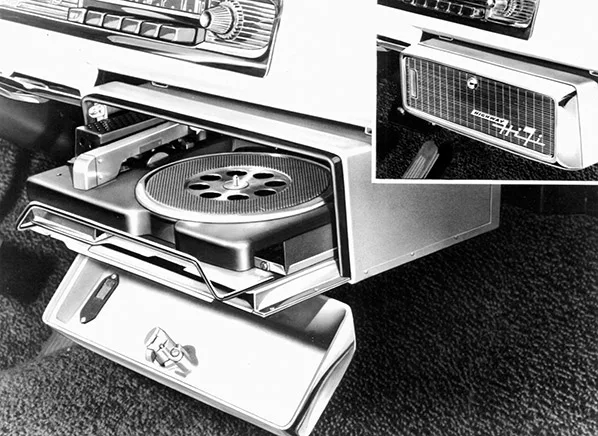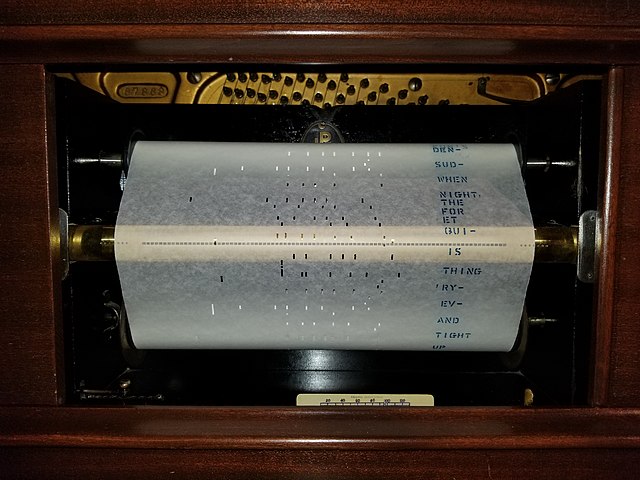
Well, almost.
The photo above comes courtesy of Paleofuture. It’s not technically Spotify. It’s really more of an iPod or a jukebox. This monstrosity could hold 200 songs and play them in any order you wanted, as long as you selected one song at a time. This was back in the days where there was no real good way to take your music with you. There were radios in cars but really nothing you would want to carry around, and as far as choosing music you owned… this was it. It was expensive and obviously pretty huge.
It wasn’t the only weird thing though

In the 1950s, many Chrysler cars were available with this device, which goes by the name “Highway Hi-Fi.” It was a record player for your car. I gotta say, those old Chryslers had a smooth ride but I have no idea how it could be smooth enough to let you play a record. But, people did it. And think about it, even with those big back seats you could hold maybe 50 or 100 albums, right? A pitiful number by today’s standards.

Believe it or not, the history of these devices goes back even further. The first coin-operated music player was demonstrated back in 1889 according to Wired, and this was a thing where you stood there with a rubber hose up to your ear to hear music. (Keep in mind that most record players of the day were not even electric and could not play back very loudly.) It was the first pay-to-play music player and that makes it the spiritual ancestor to Pandora, Spotify, Apple Music, and all the other services used today. Apparently, that’s what these well-dressed woman (and the one man, who may or may not have known where he was) were doing. This is how you picked your own songs 130 years ago. No wonder the popular music industry was in its infancy.
Or you could do this

Christian D. Fielding, courtesy of Wikipedia
Starting in the mid-1800s, automatic pianos, also called player pianos or pianolas, were available. These monstrosities used compressed air, provided by foot pumps. You provided the foot power. These gauzy rolls told the piano what notes to play. People accumulated massive player piano roll collections. The peak of player piano usage was in the 1920s, and after that people became more interested in records and radio. I’m thinking that eventually their feet just got tired.



